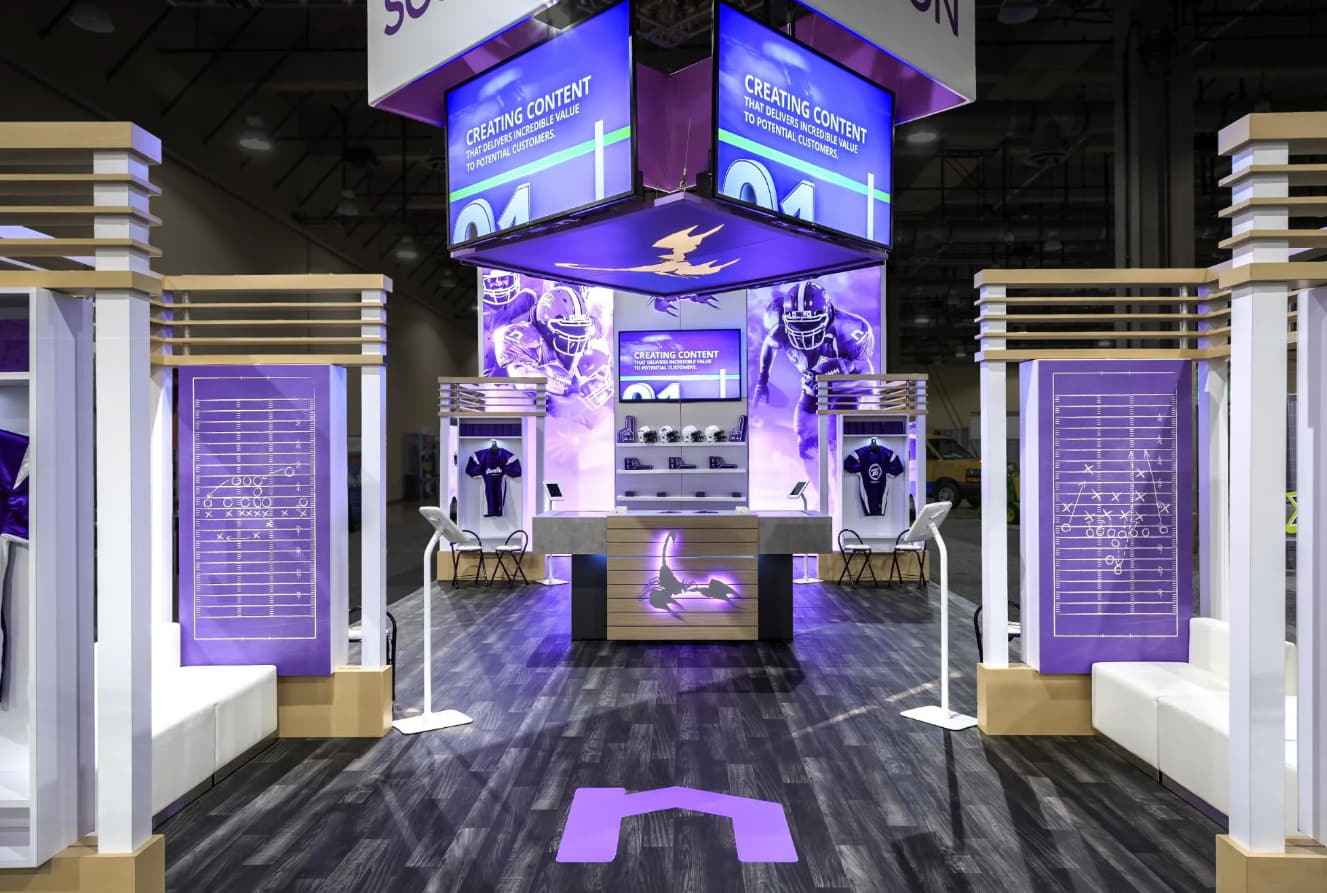Planning and effectively designing a trade show booth is a strategic endeavour that can significantly impact your brand’s success. Your booth serves as a visual representation of your company, making it crucial to avoid common pitfalls that could hinder your efforts. Let’s explore the major mistakes to steer clear of when planning your trade show booth design.
1. Ignoring Your Audience
Tailoring your booth to your target audience is paramount. One of the most common mistakes is creating a design that doesn’t resonate with the attendees. Understand your audience’s preferences, interests, and needs to ensure your booth captures their attention and leaves a lasting impression.
2. Lack of Clear Message
A cluttered or confusing message can quickly turn potential leads away. Your booth design should convey a clear and concise message about your brand, products, or services. Avoid overwhelming visuals or excessive text; instead, focus on a strong, memorable message that sticks with attendees.
3. Poor Space Utilization
Maximizing your booth space is essential. A common mistake is either overcrowding the space with too much information or leaving it too bare. Strike a balance by incorporating engaging visuals, interactive elements, and strategically placed information to create an inviting and informative environment.
4. Inconsistent Branding
Your booth is an extension of your brand, and inconsistent branding can dilute its impact. Ensure that your colours, logo, and messaging align with your overall brand identity. Consistency reinforces brand recognition and strengthens the connection between your booth and your company.
5. Neglecting Lighting
Lighting is a powerful tool that can enhance your booth’s visual appeal. Many exhibitors make the mistake of underestimating the importance of proper lighting. Well-designed lighting can highlight key areas, create a welcoming atmosphere, and draw attention to your products or services.
6. Forgetting Engagement
A booth that lacks interactive elements may struggle to engage attendees. Incorporate activities, demonstrations, or interactive displays to encourage participation and create a memorable experience. Attendees are more likely to remember and connect with a booth that offers more than just information.
Conclusion
In summary, steering clear of these major mistakes and focusing on audience engagement, clear messaging, and consistent branding is essential for the success of your trade show booth design. A thoughtful and strategic approach to your booth design will undoubtedly leave a lasting impression on your target audience, ensuring your brand stands out in the competitive landscape of trade shows.

